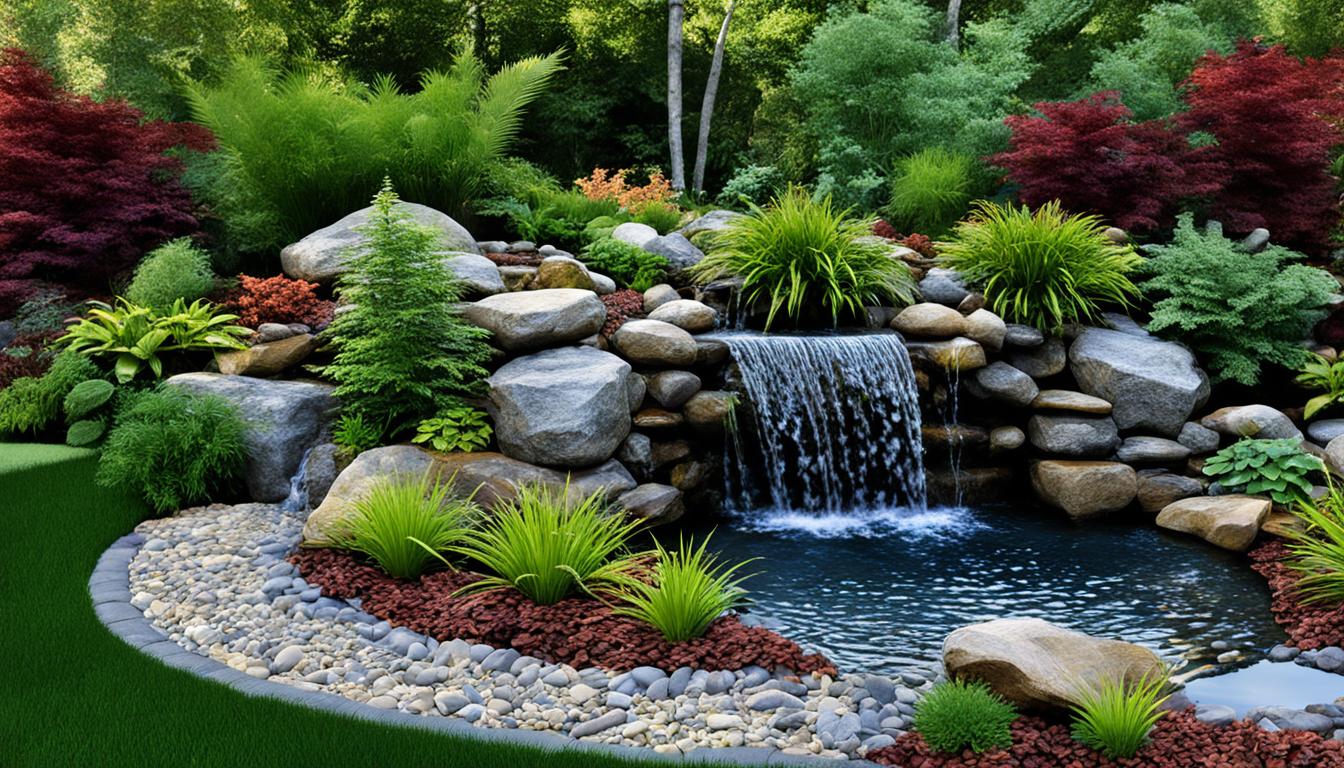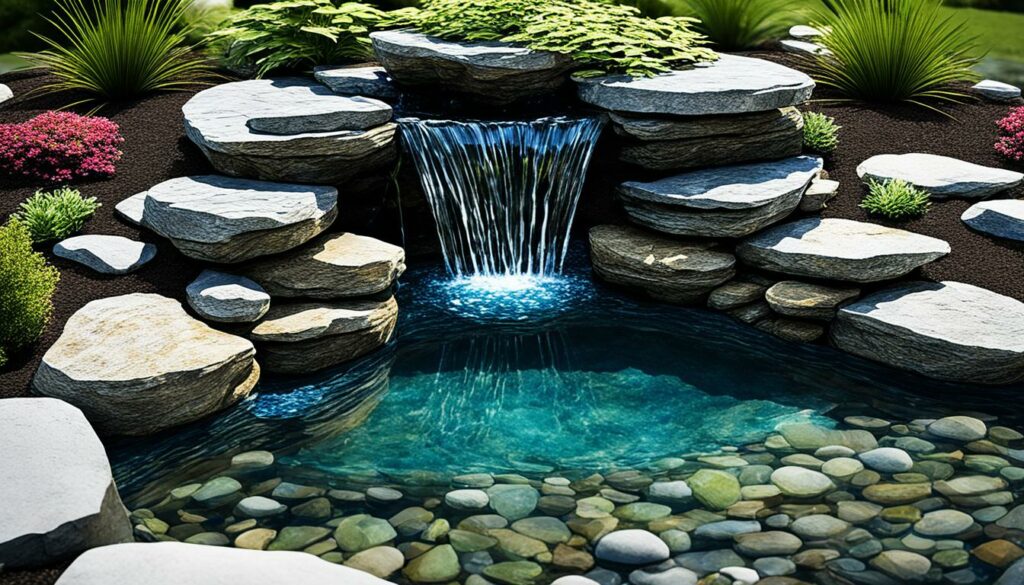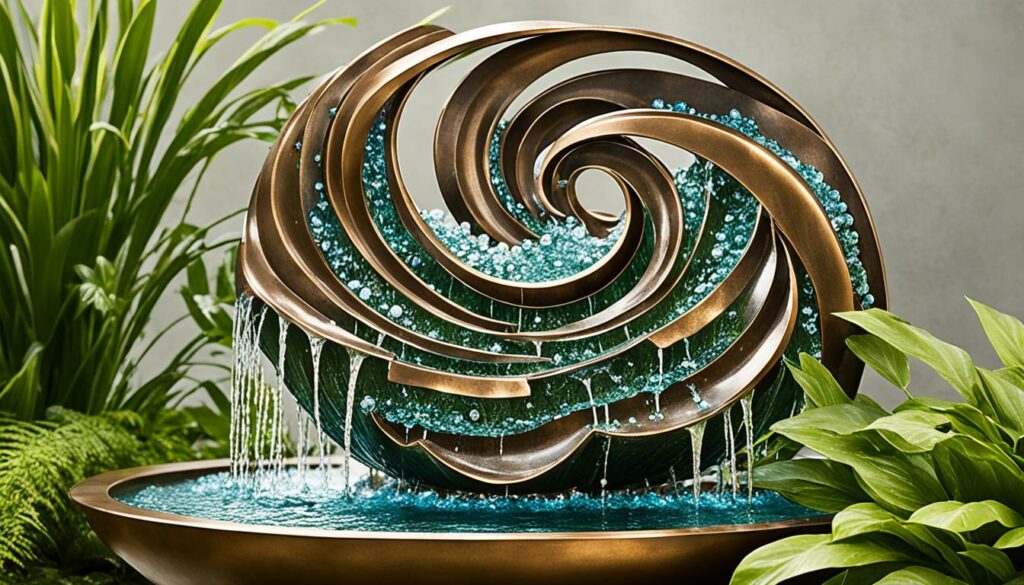
Water features are a pivotal element in creating an oasis of tranquility within outdoor spaces such as circular driveways, entryways, gardens, and patios. The choice of the right material is crucial for a water feature's longevity, visual appeal, and ease of maintenance. Materials like granite, bronze, and ceramic provide a range of benefits, from durability to artistic elegance. However, one must consider various factors, including the climate, maintenance frequency, and compatibility with the overall design of the outdoor setting, when selecting garden materials.
Key Takeaways
- The right material selection is vital for the longevity and aesthetic appeal of outdoor water features.
- Granite, bronze, and ceramic are top choices for their durability and elegance.
- Consider the climate and maintenance needs when selecting materials.
- Compatibility with the overall design of garden spaces is essential.
- Proper material choice can enhance the tranquility of outdoor environments.
Introduction to Water Feature Design
A carefully designed water feature can transform an ordinary garden into a serene oasis. Not only do outdoor water features enhance both the visual appeal and auditory experience of the space, but they also add a touch of tranquility. Choosing the right water feature materials is essential to achieving the perfect balance between the feature's style, maintenance, and harmony with the surrounding landscape.
The selection of water feature materials ranges from natural stones like granite and marble to manufactured options like acrylic and resin. Each of these options offers unique advantages and specific considerations for different settings. The key to successful water feature design lies in understanding these materials and their suitability for particular environments.
- Natural Stones: Options such as granite and marble provide a timeless elegance and durability.
- Manufactured Materials: Acrylic and resin are versatile and often more manageable in size and weight.
When considering water feature design, it's crucial to select materials that not only complement the aesthetic of your garden but also fit within the practical requirements of maintenance and durability. By choosing the right water feature materials, you can create an outdoor retreat that is both beautiful and functional.
Natural Stone Options
Natural stone water features offer timeless beauty and enhance garden spaces with their elegance and durability. These garden materials provide distinct aesthetics and functionality, ensuring each feature stands out, whether it is made from granite, marble, slate, or limestone and sandstone.
Granite
Granite is renowned for its durability and low maintenance. Available in various colors, it can be hand-carved to add a unique touch to water features. Granite is perfect for those looking for a resilient material that stands the test of time and is a common choice for natural stone water features.
Marble
Marble offers a luxurious look, characterized by its various colors and veins. Ideal for artistic centerpieces, marble brings sophistication to any garden. While it requires regular maintenance to prevent staining, its opulent appearance makes it a popular choice among those seeking an upscale aesthetic.

Slate
Slate provides a unique texture and earthy tones, creating a natural look. This material is suitable for those desiring a rustic charm in their water features. Its distinctive layers and hues make slate a favored option for enhancing the natural feel of a garden.
Limestone and Sandstone
Limestone and sandstone are known for their soft, porous nature and uniform color palettes. These materials offer a traditional charm and blend seamlessly into a range of garden designs. However, they require more regular maintenance to preserve their appearance.
Man-made Materials
Man-made materials present versatile and often economical alternatives for water feature construction. These materials offer various benefits, including durability, aesthetic appeal, and ease of maintenance. Understanding the unique properties of each material can help you select the best option for your custom water feature.
Acrylic and Resin
Acrylic and resin fountains provide the artistic look of glass with enhanced durability. These materials are lighter than glass and less susceptible to shattering. However, they may yellow over time due to prolonged sun exposure. Incorporating acrylic and resin in your water feature designs can offer a modern and sleek appearance while ensuring robustness. Proper care and maintenance can extend their lifespan and maintain their clarity.
Cast Stone and Concrete
Cast stone and concrete are commonly used in creating water features that mimic the elegance of natural stone. These man-made water feature materials are known for their durability and ability to mold into various intricate designs. It is essential to prepare these features for winter, particularly in freezing climates, to prevent cracking. Both cast stone and concrete require regular sealing and maintenance to preserve their appearance and structural integrity over time.
Polyresin and Fiberglass
Polyresin and fiberglass are popular for their lightweight properties and ease of molding into various designs. These materials are ideal for intricate and detailed water fountains. While they are easy to transport and install, there is a risk of cracking and fading when exposed to harsh weather conditions. Choosing polyresin and fiberglass can add elegance to your outdoor space while simplifying the installation process. Regular cleaning and protective coatings can help mitigate wear and extend the life of these water features.
Metal Materials for Water Features
Metals like bronze bring a classic elegance to water features, enabling intricate designs and lasting shine. Bronze fountains, with their capability for fine detailing, often become striking focal points that can complement the color scheme of any garden.

Durability is a paramount advantage, making metal water features a preferred choice for long-lasting installations. When selecting durable garden materials, metal options ensure that your garden is not only beautiful but also resilient against wear over time.
Although some maintenance is required to preserve the original colors, particularly for materials like bronze, the effort is minimal compared to the longevity and beauty provided. Those considering to incorporate such features may benefit from consulting reputable water feature contractors to bring their unique designs to life.
Water Feature Materials for Specific Climates
When designing outdoor water features, the selection of materials should account for the specific climate where the feature will reside. Understanding the implications of climate-specific water feature materials is crucial for ensuring the outdoor water feature durability over time.
Cold Climates
In regions with cold climates, materials that can withstand repeated freezing and thawing cycles are essential. For example, granite is an excellent choice due to its inherent durability and resilience. Metals like stainless steel also perform well in cold environments, as they are less prone to cracking and damage caused by ice formation.
Warm Climates
Conversely, warm climates provide more flexibility in selecting materials for water features. In such locales, options like marble and ceramic become viable. These materials are appreciated for their aesthetic appeal but may struggle in colder temperatures. Since freeze-thaw cycles are not a concern, these delicate materials can be employed to create visually stunning and intricate designs while maintaining the requisite outdoor water feature durability.
Taking climate into account ensures the longevity and functionality of water features, making it a critical aspect of design.
By carefully selecting climate-specific water feature materials, designers can create installations that not only look beautiful but also stand the test of time, regardless of the environmental conditions.
Factors to Consider When Choosing Water Feature Materials
When engaging in the material selection for water features, it is crucial to consider various factors to ensure the longevity and aesthetic appeal of your installation. First and foremost, understanding the local climate is essential. Materials that hold up well in warm climates might not be suitable for cold climates, and vice versa.
The intended aesthetic of your outdoor water features should also guide your choice of materials. Whether you aim for a natural look with landscape materials such as stone or a contemporary design using metals or acrylic, alignment with your overall landscape design is a must.
- Durability: Choose materials that can withstand local weather conditions to ensure longevity.
- Maintenance: Opt for materials that require minimal maintenance to save on time and costs.
Moreover, practical considerations such as cost, ease of installation, and the availability of materials locally can significantly impact your decision. Balancing these factors ensures that the material selection for your water features not only meets aesthetic and functional needs but also lasts for years to come.
Comparing Costs of Water Feature Materials
When deciding on the ideal materials for your garden water feature, it's imperative to consider both the initial costs and the long-term investment involved. Understanding the balance between these can guide you to make a well-informed choice.
Cost Considerations
The upfront water feature materials costs can vary significantly based on your selection. High-quality materials such as granite or bronze typically come with a higher initial price tag. However, these materials are known for their durability and low maintenance needs, providing a better return on investment in the long run.
Conversely, opting for less expensive materials like acrylic or resin might appear economical at first glance. However, these choices might lead to higher long-term expenses due to frequent maintenance and potential replacements.
Long-term Investment
Choosing the right materials can be viewed as a significant investment in garden materials. Durable options such as granite and bronze not only withstand the test of time but also retain their aesthetic appeal with minimal upkeep. This makes them ideal for those looking at long-term value rather than just the initial purchase price.
While less expensive materials like concrete or fiberglass might offer immediate savings, they often require more frequent maintenance and replacements. Thus, despite lower water feature materials costs initially, they might end up being more expensive over time.
Conclusion
Choosing water feature materials is a crucial step in enhancing your outdoor space. Whether you opt for the timeless elegance of natural stone or the durability of man-made composites, your selection will significantly influence the aesthetic appeal and sustainability of the design. Each material has its unique benefits and challenges, making it essential to consider factors such as budget, climate conditions, and maintenance requirements.
Natural stones like granite and marble offer a classic, enduring look, while materials such as acrylic, resin, and fiberglass provide modern, versatile options. Additionally, metal materials like stainless steel and copper can deliver a contemporary edge to any water feature. By carefully evaluating these choices, you can ensure your water feature not only enhances your environment but also aligns with your long-term vision for sustainability and maintenance.
In summary, a deliberate and informed approach to water feature design will yield an outdoor space that is both visually stunning and functional. Pay close attention to your personal preferences, the climate you're in, and any budgetary constraints to make a choice that truly amplifies your outdoor space. Ultimately, selecting the right materials is fundamental to achieving a water feature design that is sustainable, enjoyable, and beneficial for years to come.








